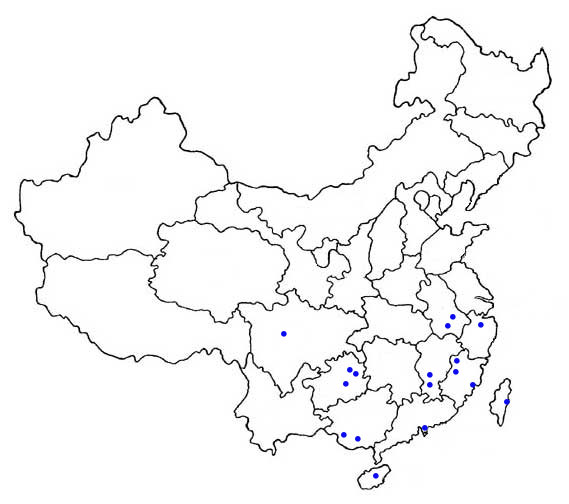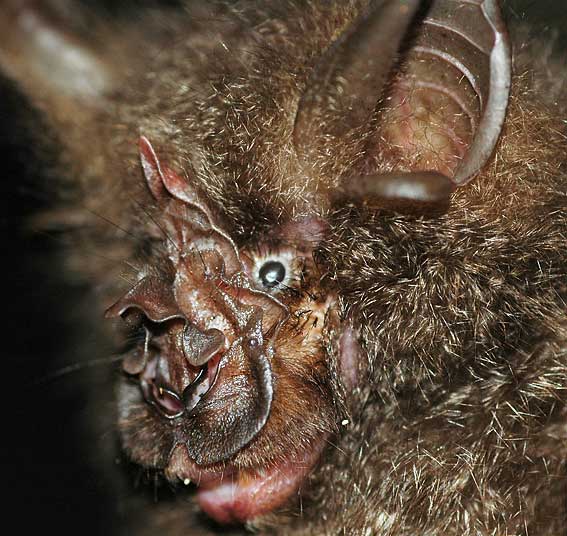Rhinolophus luctus
Woolly Horseshoe Bat
Morphological description Life history Distribution Habitat Roost sites and roosting patterns Emergence and flight pattern Foraging behaviour Echolocation calls Status and protection
Photograph from Malaysia, repoduced with permission from Juliana Senawi.
Morphological Description
· The fur is long and fluffy. Dorsal fur is grey-brown. Ventral fur is grey or white-grey.
· Juveniles are darker than adults.
· This is the largest horseshoe bat, and can usually be identified by its size. Forearm length 58.0-80.5mm (Csorba et al. 2003).
· The horseshoe is wide. The base of the sella has pronounced circular basal lappets on both sides; the tip of the parallel-sided sella is deflected downwards and forwards. The connecting process is broadly rounded off and very reduced. (Csorba et al., 2003).
·The ears are of medium length, 27.9-44.0 mm in length (Csorba et al. 2003).
Life history
· Little known
Distribution
Found from northern India, Nepal and Myanmar to southern China, and south to Vietnam, Lao PDR, Thailand, Peninsular Malaysia and Indonesia (Csorba et al. 2003). The Chinese distribution is shown by the dots on the map below (as given by Zhang et al . 1997).

Habitat
· Little known. Bates and Harrison (1997) noted that it is found in mountain regions, and is a forest dwelling species.
Roost sites and roosting behaviour
· Generally roosts in caves, sometimes in hollow trees (Duckworth et al. 1999). Woolly horseshoe bat roost singly or in pairs in caves (Bates and Harrison 1997).
· They also roost in rock shelters and overhangs, shallow hollows in earth banks or among the roots of trees (Medway 1969) and in hollow tree trunks (Lim and Heyneman 1968).
.
Emergence and flight pattern
· Most rhinolophid bats have wing shapes that make them adept at foraging in cluttered environments.
Foraging behaviour
· No data.
Echolocation calls
The echolocation call is a long constant frequency signal, with a brief frequency-modulated start and tail. Frequency of most energy was recorded at 40 kHz for bats in Thailand (Robinson 1996), 42 kHz in Malaysia (Kingston et al. 2000).
Status and protection
· There is no estimation of population size in China.
· Woolly horseshoe bats are LR/lc, assessed by the Red List of Threatened Species (IUCN, 2006): the species is geographically widespread, although little studied. The species is not listed in the Law of the People's Republic of China on the Protection of Wildlife in 1989.
· Caves and forests should be protected as important habitats.
